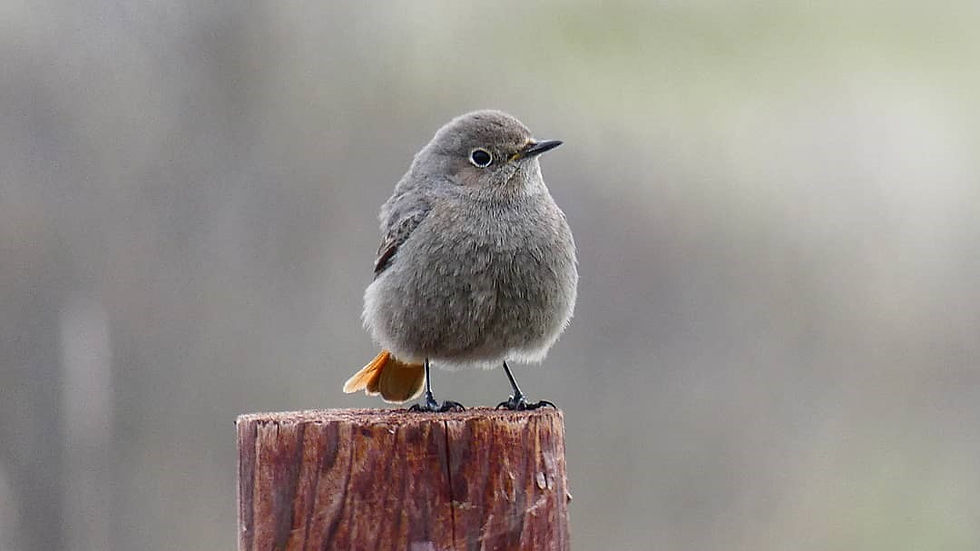Cattle wearing new smart collars will help improve Lincolnshire’s precious sand dune habitats
- saltfleetbytheddle
- Apr 27, 2021
- 4 min read
Now Reserve Managers at Saltfleetby-Theddlethorpe National Nature Reserve can control where the helpful herds graze, from their mobile phones
In June 2021, a herd of 10 cattle will arrive at their summer grazing grounds, with a very important job to do. They are an essential part of a project called Dynamic Dunescapes, which aims to restore 7,000 hectares of coastal sand dune in England and Wales.
Sand dunes in Lincolnshire, and in the rest of the UK, are in bad condition. To provide homes for a diversity of specialised and rare sand dune wildlife, healthy sand dunes need a mosaic of habitat types. This includes short grassland, and areas of bare and open sand which are free to move. However, most sand dune habitats are currently over-stabilised and smothered with vegetation. As a result, sand dunes are one of the most threatened habitats type in Europe for biodiversity loss.
What does this have to do with cows? Well, by grazing and trampling, cows help to keep overgrowing vegetation under control. They curl their tongues around the grass, pulling it up to form tussocks which are an ideal micro-habitat for a wide range of invertebrates. They also break up areas of dense vegetation, and their footfall creates areas of much-needed bare ground that dune habitats need. Even their dung is important – offering a vital resource for many invertebrates including dung beetles, which help recycle the nutrients into the soil.
This year for the first time on the reserve, a team from Natural England will be using NoFence technology to help guide the cows to graze in the areas that need it the most. The cattle will wear a special type of collar which contains a GPS tracker. Guy Mason, Natural England Reserve Manager at Saltfleetby-Theddlethorpe NNR, can ‘draw’ out the boundary of a virtual fence using an app on his phone. The cattle’s collars will alert the cows with a sound cue followed by a small harmless pulse the closer they get to a virtual fence, so that they stay within carefully planned areas.
Guy says, “NoFence was developed with Norwegian farmers and has piqued interest in the UK in a big way. I’m very excited about trialling this new technology. I imagine that any Reserve Officer would welcome the chance to plan some focused grazing, so I feel very fortunate that I get to try just that. These collars will also make it really easy for me to monitor the herd.”
The cattle will graze across Saltfleetby-Theddlethorpe NNR, starting in the north of the site and working their way south. Their large grazing area will still be enclosed by physical fences, but this technology can help easily move the herd to different sections of this space, allowing their conservation efforts to be tailored to the reserve’s needs at different times during the summer.
Visitors to the reserve might spot the herd and their new high-tech neck gear and are asked to look out for any signs, keep dogs on short leads around the livestock, stay on marked paths and maintain a respectful distance from these busy bovine conservationists.
Dynamic Dunescapes is a partnership project funded by National Lottery Heritage Fund and EU LIFE Programme. Natural England and Lincolnshire Wildlife Trust are leading the project’s ground-breaking sand dune restoration work in Lincolnshire. Project partners are Natural England, Plantlife, Natural Resources Wales, National Trust and The Wildlife Trusts.
Contact:
Emma Brisdion, Dynamic Dunescapes Communications Officer, Natural England
Guy Mason, Reserve Manager, Natural England

Cattle grazing the sand dunes at Saltfleetby-Theddlethorpe NNR.
Credit: Owen Beaumont
About Dynamic Dunescapes
Dynamic Dunescapes is a partnership project restoring sand dunes across England and Wales for the benefit of wildlife, people and communities, funded by the National Lottery Heritage Fund and the EU LIFE Programme. Project partners are Natural England, Plantlife, National Trust, Natural Resources Wales, Cornwall Wildlife Trust, Lincolnshire Wildlife Trust and Cumbria Wildlife Trust.
The coastal dunes of England and Wales are internationally important habitats for wildlife, listed as one of the most threatened environments in Europe for biodiversity loss. These dunes are a sanctuary to rare species like the fen orchid, natterjack toad and sand lizard. But, dune management messaging supporting dune stabilisation over many decades has meant that dunes have become overgrown with vegetation. We now realise that this is putting protected wildlife at risk. Healthy sand dunes need to be free to move and be dynamic. Many species need areas of open sand to thrive, so this project will bring life back to the dunes by creating areas of open sand. Other specialised creatures need us to improve the dune slacks, as these often water-filled dips behind the dunes are important habitats for amphibians and birds. Invasive species will also be removed from the dunes and dune grasslands, to improve conditions for rare native plants to flourish. We will work with skilled local and national experts, and involve schools and local groups, volunteers and visitors of all ages and abilities to help rejuvenate our dunes.
Follow @dynamicdunes on Twitter, Facebook and Instagram.





Comments